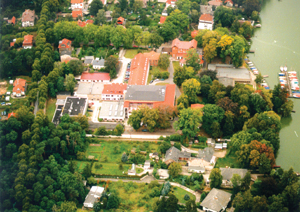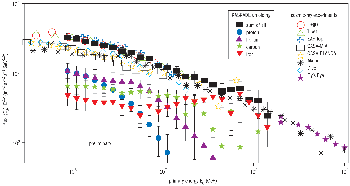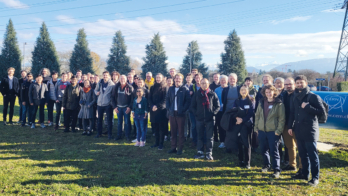Understanding what happens in the largest objects of the universe in terms of interactions between the smallest particles of matter might seem a tall order, but funding agencies see that, as well as addressing the most fundamental problems of the universe at large, astroparticle physics also has immense appeal. In this article we take a look at the astroparticle scene in Germany, one of CERN’s largest member states.

High-energy and nuclear physicists, astronomers, astrophysics specialists, astroparticle physicists and ministry representatives all provided input for a recent workshop on astroparticle physicists sponsored by the German Ministry for Education and Research (BMBF). Such cross-disciplinary input sparked many interdisciplinary discussions and was immediately fruitful.
After initial special lectures for students, the science talks proper reviewed the cosmic background radiation at all wavelengths, presented by D Lemke from the Max-Planck Institute (MPI) for Astronomy in Heidelberg; the evidence for dark matter in the universe (P Schneider, Bonn); properties of black holes (H Falcke, MPI for Radioastronomy, Bonn); the connection between astroparticle physics and particle physics (A Ringwald, DESY); and cosmology with new experiments (F Aharonian, MPI for Nuclear Physics, Heidelberg, and G Sigl, Institut d’Astrophysique de Paris).
Other talks focused on currently running or planned experiments. Now widely exploited is the technique of imaging atmospheric Cherenkov-light telescopes (IACTs), in which the primary cosmic photon is measured by the Cherenkov light emitted by the photon-induced particle shower in the Earth’s atmosphere.
In the past 10 years such experiments have progressed from prototypes to precision tools. The results are puzzling. IACTs were originally aimed at finding where galactic charged cosmic rays are accelerated, but to date no convincing acceleration sites have been pinned down. However, totally unexpected, highly variable, extragalactic sources have been discovered that emit photons with energies of up to at least 16 TeV (G Heinzelmann, Hamburg).
The detailed energy spectra obtained are difficult to understand and may conflict with our present understanding of intergalactic background radiation fields. New experiments (W Hofmann, MPI for Nuclear Physics, Heidelberg, and E Lorenz, MPI for Physics, Munich) with significantly improved sensitivities will start data taking in 2002 and are bound to find more surprises. Their energy threshold will be lowered to match the upper end of the energy range accessible by satellites (G Kanbach, MPI for Extraterrestrial Physics, Garching) so that the last energy gap for observational astrophysics with high-energy photons will be closed.

Cosmic rays
While the IACTs are fighting the air showers induced by charged cosmic rays as unwanted background, other experiments concentrate on these showers to understand the origin of cosmic rays. The ambitious aim is to collect detailed data on the energy spectrum and the mass composition. The most interesting of the energy regions are the “knee”, around 1016 eV where the index of the energy spectrum suddenly changes, and the highest energies above 1019 eV.
Due to the very low cosmic-ray flux at these energies, direct measurements by balloons or satellites (M Simon, Siegen) are not possible. The only experimental approach realized so far uses extended ground-based installations catching data of the induced air showers. Physicists encounter several challenges. One is the result of the absence of accelerator-based measurements of particle interactions in the relevant kinematic regions. Not only must the astrophysical questions be answered, but also reliable interaction models to simulate the air shower developments must be worked out in parallel.
K-H Kampert (Karlsruhe) presented the progress around the “knee” where detailed multiparameter analyses may soon allow firm conclusions to be drawn. At the highest energies, new, extended experiments will provide large event numbers (H Blümer, Research Centre, Karlsruhe) and tackle the mystery of the cosmic rays beyond the Greisen-Zatsepin-Kuzmin cut-off energy near 1020 eV.





